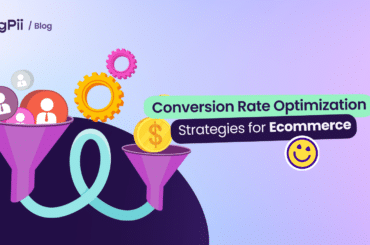Introduction
Market research is considered to be a key to valuable insights that can alter the course of your business.
It’s definitely one of those things that can make or break your business.
But I have to warn you, doing market research is not as fun as exploring an ancient Egyptian tomb. It takes a lot of time and effort.
No matter the shape or size of your business, if you don’t do market research your business will more likely go the way of the dodo.
There are dozens of great companies that have been saved from the brink of death by doing proper market research.
Best Buy is a perfect example. In 2010, it seemed like the world’s largest brick and mortar electronics store was heading to the retail graveyard. But it turned itself around when they brought in a new CEO who then used market research to improve service and introduce exclusive products.
Another good example is IBM. In the early 90’s, it lost $5 billion (yes, a billion with a B). The new CEO Lou Gerstner did many things to turn things around – among those was market research. Fast forward to 2015, the “Big Blue” generated more than $81 billion in revenue.
All this goes to show how important market research is – you can’t afford to ignore it.
So, to drill deep into this topic, I reached out to two people who have a combine experience of 30 years of doing market research. Ryan Paul and Farzad Khosravi.
Ryan founded a company that handles customer research for other companies, and Farzad has been helping startups find their market-fit through conducting market research.
What is market research?
Market research is gathering information about a certain product or service to know if the target market is right for the product or service or not.
It’s simply surveying potential customers and people who show an interest in the product or service and digging deeper into why they are interested in buying it, and collecting as much data from them as possible.
And, of course, research your competitors to see what you’re missing or what sets you apart from them.
The whole process involves both quantitative and qualitative research – this means that all the assumptions made are based on proper research and not gut feeling.
According to Ryan, market research is usually conducted before a product launch, a feature launch, or even improving your current offering.
So, how often should you launch market research? Is it only before the product launch?
Well, it depends on your type of business, how the landscape changes over time, and what competitors bring to the table.
It’s crucial to know that Outsourcing companies offer the advantage of specialized expertise, streamlined processes, and potentially cost-effective solutions, providing businesses with the opportunity to focus on core activities while benefiting from external proficiency.
Some companies do market research every 6-12 months, and some corporates have dedicated employees who handle doing research regularly as a full-time job.
So you should do market research before launching a new product and after 6-8 months of launching that product.
In the end, what you need to achieve from your research is the following:
- Is there a market need for my product or service?
- How much are customers willing to pay for this product or service?
- Are there any revenue opportunities I may be missing?
By going through the market research process in all of its glory, you would answer these questions, not just these three but much more!
Why is market research important?
It comes as no surprise that without market research, you’re flying blind to uncharted territory.
But let me give more examples of why you need to do market research and why these research reports can end up saving you thousands of dollars.
When I asked Ryan, he was clear on it:
“You will not win! You might get lucky because businesses, markets, and verticals aren’t static; things are always changing.
One example I can give you is what’s the total addressable market of video calling apps before the pandemic?
Not that much, right? What was it like during the pandemic? It soared, right? What about now? Zoom’s shares are tanking now because people are abandoning the platform.
If you don’t do a proper market research, you’ll find that it’s hard to get traction and then maintain growth.”

1. It enables your company to become customer-centric
It comes as no big surprise, right? You’re launching a product for your customers, so what you need to be is actually customer-centric.
Being customer centric is all about building your product according to what your customers want and not what you think they want.
And the only way of doing that is to have regular conversations with your customers and to listen to their needs, suggestions and complains.
2. Give you a much deeper understanding of your users’ needs.
When people say they want something, they say that because they have a problem that they’re trying to solve, and when you understand why certain customers want to solve certain problems, it gives you a head start.
3. Confirm or debunk personal assumptions and biases
This is one of the most important reasons you need market research because as a human you’d be biased towards the product or service you’ve created.
But sometimes, our creations aren’t what the customers want, and you end up creating a product that no one wants or cares about.
So doing market research either reinforces that there’s demand for a product or service or debunks it before it’s launched!
As Farzad puts it:
“Everything should be based on evidence; we’re fallible creatures with biases and heuristics that lead us astray.
So we need to have clear definitions of what we believe about the world and clear ways to determine whether that belief is accurate.
So if we’re going to build anything, we need to validate it before working on it; otherwise, we’ve spent all that time and money on something that will not bear us any fruit.
Types of Market Research: Market Research Methods and Examples

We have 2 main types of market research methods according to various sources, and of course, Ryan and Farzad.
These are Primary Research, Secondary Research,
- Primary Research
Primary research is going straight for the source, which is your customers.
Basically, within primary research, you have four things:
= Focus groups
= Interviews
= Polls
= Surveys
The importance of primary research is that it allows you to gather information and feedback directly from your target audience.
So if you’re conducting research that might shed light on other aspects of your product or uses that you weren’t focusing on, which can be of significant importance.
- Secondary Research
Secondary research is based on research that exists, which makes it easy for a researcher to debunk or reinforce a hypothesis even before digging deep and doing focus groups and interviews.
Here is what you can use to conduct secondary research:
= Articles
= eBooks
= Infographics
= Videos
= White papers
- Q&A Sites where users hang out (Quora, etc.)
- Communities where users hang out (Facebook groups, Reddit, etc.)
Within Primary and Secondary market research, some people like to break it down even further, but as Ryan puts it, Qualitative and Quantitative are a part of Primary and Secondary.
- Qualitative Research
Some of these questions might be:
= What made you buy our product or service?
= How do you think our product or service stands up to competitors?
= What features do you like about our product or service and why?
= In what areas do you think our product or service could improve and why?
- Quantitative Research
Quantitative research is research that requires a bunch of tools and analytics to conclude; it doesn’t require chatting with anyone; it’s mostly crunching numbers; some of the metrics that we look at are:
= SEO Rank
= Bounce rate
= Pageviews
= Share of voice
= Social media followers
= Social media engagement
= Subscribers
Who conducts market research?

It depends on the situation itself, which is a kind of vague answer, but I’ll try to make it clearer with the help of Ryan and Farzad.
The Founder / CEO
If it’s a small business, then it’s the owner that needs to do basically everything.
Because he doesn’t have a lot of options on hand, which like everything in the world, has its pros and cons.
So if an owner does the research, he might be biased toward his company, and his research results might not be accurate and reflective of the current situation.
But if he eliminates his bias and comes with an open mind, he might uncover crucial information that leads to breakthroughs in his product development.
Customer Success Team
CS teams are crucial in getting deep insights that can be super helpful for marketing because they deal with customers all day, every day.
They can even do market research without making the customer feel like they’re doing market research, and that might be helpful in getting hidden insights about their target market.
Marketers
Marketers are always on the lookout for how to be more effective, and what better way to do that than doing market research themselves?
Now, as Ryan points out, within marketing teams, different teams can actually do that research based on the situation.
So product teams can do it, generalists, sometimes even UX / UI.
There isn’t a right or wrong answer; eventually, decide based on your situation.
Should you do market research in-house or outsource it?
Each choice has its own pros and cons, so I asked Ryan those questions since he runs his own research company!
The pros of outsourcing your market research are that an outside company can do it faster and better since it’s what they specialize in, right?
As Ryan puts it, “We have a methodology that we follow, and we’ve done so many times it becomes easy to pick up patterns in customers’ answers.
We codify quantitative answers by finding themes and patterns that eventually help standardize answers.
Also, sometimes people are more honest with us because we’re not from within the company and there are no feelings involved; they are more honest with us”
As for cons, “You’ll have to take all that work that we did and translate it into marketing; you also lose the ability to have a deep understanding of your customers yourself and ask good questions, because I won’t know the product as someone who works in the company would.”
Ryan also pointed to cons that an in-house researcher might have “an in-house researcher will hear things that sound interesting or make sense or shed light on an important note that deserves to be looked into more thoroughly.”
As for the cons, as he noted, an in-house researcher mightn’t be as well trained to do research as a researcher who does that for a living will, but that doesn’t mean that they can’t do it in-house.”
So you have pros and cons for both; there’s no right or wrong answer.
It depends on your situation, which is always different from anyone else’s.
How to conduct market research?

Your customers and competitors influence your research. That’s your ground zero.
First, you need an aim to lead with; what is it you want to discover by doing that market research? Do you have a hypothesis that you want to confirm or debunk?
After you have that in a document, you need to start the research itself; there are different approaches to doing market research, but I’ll walk you through the most tried and trusted one.
Step 1: Understand the macro-economics of your market
The first step is that you need to know the bigger picture of your market; we gave the example of Zoom at the start of the blog and how looking at the market from a higher level can save you in the long run.
So even if you’re a small company, you need to know the full extent of the market that you’re stepping into.
Because there are a lot of factors that can affect your business and your market that you need to account for before building your product or service.
Step 2: Define your buyer persona
The 2nd step you definig your buyer persona based on what you have gathered from the current macro-economics of your niche.
You have an idea if how your bigger picture look but that’s not good enough, now you need to drill deeper into what makes your customers tick.
Step 3: 1-on-1 interviews to gather an initial set of insights.
The third step is you want to get deep into your prospect’s mind. You’ve built your hypothesis using secondary research by looking at previous research and blogs and articles.
But now comes the time to get deep into the action itself, talking to the prospects that will either use your product or service or won’t.
You need to come up with several open-ended questions you can ask your interviewees.
Step 4: Validate via a wider range of surveys
Now comes the fourth step, which is doing your surveys to make sure that everything you gathered so far makes sense and follows trends and patterns that you’ve noticed in your interviews.
You can use a range of different questions to make sure that everything falls into place.
FigPii offers a bunch of different poll options for you to choose from.
Use open-ended questions so your customers can be free to tell you what is it they’re thinking of and how you can improve your product or service.
Step 5: Survey competitors and their positioning
Now you need to know where you stand and how you can differentiate yourself from your competitors.
You need to know what their USPs and positioning strategies are they using so you can set yourself apart from them by using messaging copies and positioning strategies based on your research.
Step 6: summarize your findings
And now, with the last step, you need to summarize everything you have concluded so far in a document or a sheet that you could reference in the future.
You can always go back to that research to see if your hypothesis about your business were right or not.
Mistakes to avoid when doing research

- Make your objective clear.
Many people, when they do market research, they have a vague understanding of what they’re trying to achieve overall.
As Ryan puts it, “People rarely set objectives, market research isn’t a science lab, but you need to have guardrails, and you need to standardize your process.
What does he want to know? That’s the question that needs to be present when doing research because it’s easy to get sidetracked by talking to your customers.
Don’t get me wrong, having a chat with your customers, but when you 30 minutes pass by, and you’ve not talked about what you need to know more about, that sucks.”
- You need to come with an open mind.
Some people don’t like answers that don’t resonate with them or go against what they believe in.
This is a huge mistake because what you’ll discover when doing research is that you sometimes will find people who don’t share the same thoughts, especially if you’re a founder and it’s your product that’s in question.
- Avoid Bias
That’s no brainier when doing market research. When you let your biases into research, you won’t get the answers that drive you forward; you’ll get answers that make you feel good.
And that’s where many people go wrong because they think they’re doing well and there’s demand for their product while there’s not.
So it’s important that you know your biases and try eliminating them as much as possible before diving into your market research.



